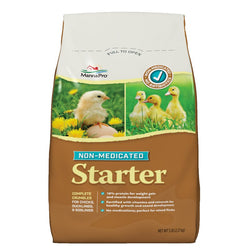All about Perosis disease
Back to blog
Perosis is a nutritional deficiency that can cause swollen, twisted, broken, or bowed legs, or loss of color in feathers, the comb, or the roof of the mouth. Thankfully, nutritional deficiencies can be avoided by making sure your flock has free-choice access to complete, nutritionally-balanced feed. Don't just feed them scratch or kitchen scraps; that can cause problems for them later on! Read on to find out more:
Perosis Also called
Slipped tendon, chondrodystrophy
Prevalence
Uncommon in layers, common in heavy, fast growing chicken breeds used for meat production.
Signs
General signs
Swollen hocks, one or both legs twisted to side, appearance of broken or bowed leg/s. In some cases (caused by niacin deficiency) the Achilles' tendon may slip out of place and leg may be held at an odd angle, and the chicken may also have loose droppings. With folic acid deficiency, there may be brittle feathers, depigmentation of feathers, pale mucous membranes in the mouth, and pale comb. With biotin and pyroxidine deficiencies, the chicken may display dermatitis on the legs and feet.
Cardinal or diagnostic signs
Thickened bones in legs and wings on necropsy
Cause/s
Nutritional deficiency of choline, manganese, and/or B vitamins (such as niacin, biotin, and folic acid).
Communicability
Not communicable, but many members of a flock may share this problem if they're on the same deficient feed.
Communicability to humans
No.
Incubation period
None, but as a deficiency, it takes some time to develop. In chicks of fast-growing meat breeds, may start around 10 days of age.
Latent
No
Endemic
No
Home treatment and/or prevention
Prevention: Provide a good, fresh, nutritionally balanced feed for your flock. Don't make the mistake of offering something like scratch only, or kitchen scraps only.
Treatment: Supplement with bholine, B vitamins, and manganese.
Veterinary care
A veterinarian can diagnose this problem and suggest good supplements.
Recovery
Treatment will not correct damage, but will prevent the problem from getting worse or developing in other birds.
Other conditions, illnesses and/or diseases with similar signs:
Early stages may be mistaken for white muscle disease (nutritional muscular dystrophy), big hock disease (infectious synovitis), spraddle leg, broken limbs, or other illnesses causing leg problems.
Also consider browsing through this list of other chicken illnesses with neurological symptoms.
Perosis Also called
Slipped tendon, chondrodystrophy
Prevalence
Uncommon in layers, common in heavy, fast growing chicken breeds used for meat production.
Signs
General signs
Swollen hocks, one or both legs twisted to side, appearance of broken or bowed leg/s. In some cases (caused by niacin deficiency) the Achilles' tendon may slip out of place and leg may be held at an odd angle, and the chicken may also have loose droppings. With folic acid deficiency, there may be brittle feathers, depigmentation of feathers, pale mucous membranes in the mouth, and pale comb. With biotin and pyroxidine deficiencies, the chicken may display dermatitis on the legs and feet.
Cardinal or diagnostic signs
Thickened bones in legs and wings on necropsy
Cause/s
Nutritional deficiency of choline, manganese, and/or B vitamins (such as niacin, biotin, and folic acid).
Communicability
Not communicable, but many members of a flock may share this problem if they're on the same deficient feed.
Communicability to humans
No.
Incubation period
None, but as a deficiency, it takes some time to develop. In chicks of fast-growing meat breeds, may start around 10 days of age.
Latent
No
Endemic
No
Home treatment and/or prevention
Prevention: Provide a good, fresh, nutritionally balanced feed for your flock. Don't make the mistake of offering something like scratch only, or kitchen scraps only.
Treatment: Supplement with bholine, B vitamins, and manganese.
Veterinary care
A veterinarian can diagnose this problem and suggest good supplements.
Recovery
Treatment will not correct damage, but will prevent the problem from getting worse or developing in other birds.
Other conditions, illnesses and/or diseases with similar signs:
Early stages may be mistaken for white muscle disease (nutritional muscular dystrophy), big hock disease (infectious synovitis), spraddle leg, broken limbs, or other illnesses causing leg problems.
Also consider browsing through this list of other chicken illnesses with neurological symptoms.











